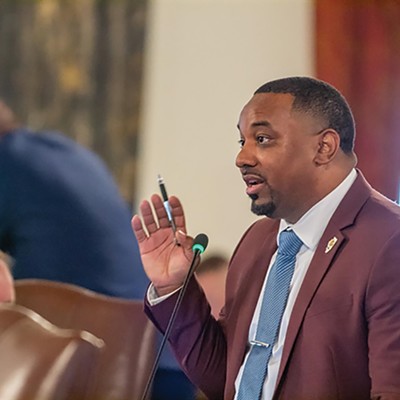Springfield educators are brainstorming ways to bring more diverse staff to the district and address teacher shortages. Roy Gully, a social science teacher and football coach at Springfield High School, said teachers with the Springfield Education Association union know that lack of diversity is a major problem. Gully was recruited to be a part of the Grow Your Own committee.
Members have goals to increase the number of Black and Latino teachers recruited from within Springfield.
Illinois State Board of Education data from 2020 shows there are more Black students in District 186 than white ones, with 40.7% Black and 40.2% white. Of the other demographics, about 13% of students are multiracial. Combined, Latino and Asian students make up 6%.
But only 7.1% of teachers in District 186 are Black, based on the 2020 numbers, with 2% multiracial and less than 1% Hispanic. White educators make up 87.8% of the reported total. "These are numbers you'd hear from the 1940s or 1950s," said Gully. Gully, who is Black, is working with other staff, the superintendent and union members to discuss how to raise the numbers of minority teachers in the district. The committee also invited NAACP, faith and business leaders to offer ideas on how to improve recruitment and retention.
"We want to make this a community effort," said Gully. The team visits high schools and colleges. Gully said he has accompanied Superintendent Jennifer Gill and others as a minority recruiter and representative for the district. Gully said this strategy worked for him, as he recalled visiting a small job fair in Joliet years ago. He said a minority recruiter spotted him, as he was "probably the only Black person in the entire small college fair." The week after, Gully got an interview and was offered a job a few days later.
The district has had success in recruiting diverse teachers. But it's been much harder to keep them in Springfield. Grow Your Own committee members are trying to figure out why. They are also exploring ways to grow talent that starts within the district. District 186 has set up ways for high school students to earn college teaching credits early.
The committee is still looking for ways to alleviate financial barriers for college-bound teaching grads. At one of the committee meetings, younger African American teachers were invited to say how the district could improve. They spoke of improving the city's atmosphere to better suit young and diverse people, something that requires a "group effort," said Gully. "Colleges, school districts, the community, we all can do better."
COVID-19 complications
The Illinois Education Association (IEA) – one of the state's largest teacher unions – conducted a survey last fall that found more than one third of teachers were considering retiring or leaving the profession.
IEA and researchers with the University of Illinois Institute of Government and Public Affairs (IGPA) found some teachers cited struggling to adapt to online instruction. The state allows districts to decide how to teach during the pandemic. The plans are up to local control, which means there has been a patchwork of various policies from one district to another. Teachers and superintendents understand the value of in-person learning but many do not want to risk the health and safety of staff and families.
Hybrid learning – having students learn in-person on certain days and at home, online, on others – is ideal to meet the needs of students and balance COVID-19 restrictions, some say. Then again, last fall researchers from IGPA found blended learning like this intensifies teachers' workloads. Students are in constant contact with teachers, who are "on-call" most hours of the day. Between filling in for others, teaching online and in-person and managing their personal lives and challenges during a pandemic – educators are being pulled in multiple directions and are worn thin.
The IGPA report found teachers are leaving the profession early because of low job satisfaction, challenging work conditions and perceived lack of support from administrations. Some teachers struggle to care for their own children. A new survey conducted by the Illinois Regional School Superintendent Association and Illinois State University found 77% of superintendents are struggling to find teachers. It also showed 93% of districts are having problems finding substitute teachers.
Gully said District 186 has seen a loss from its usual pool of substitutes, mostly retirees. Because of this, administrators and teachers are taking on extra work, he said. Legislators in Illinois are working on making the reentry process easier for retired teachers. But given the group's high-risk vulnerability to COVID-19, many are opting not to teach in classrooms until the health risks are lessened.
Contact Madison Angell at [email protected].

















